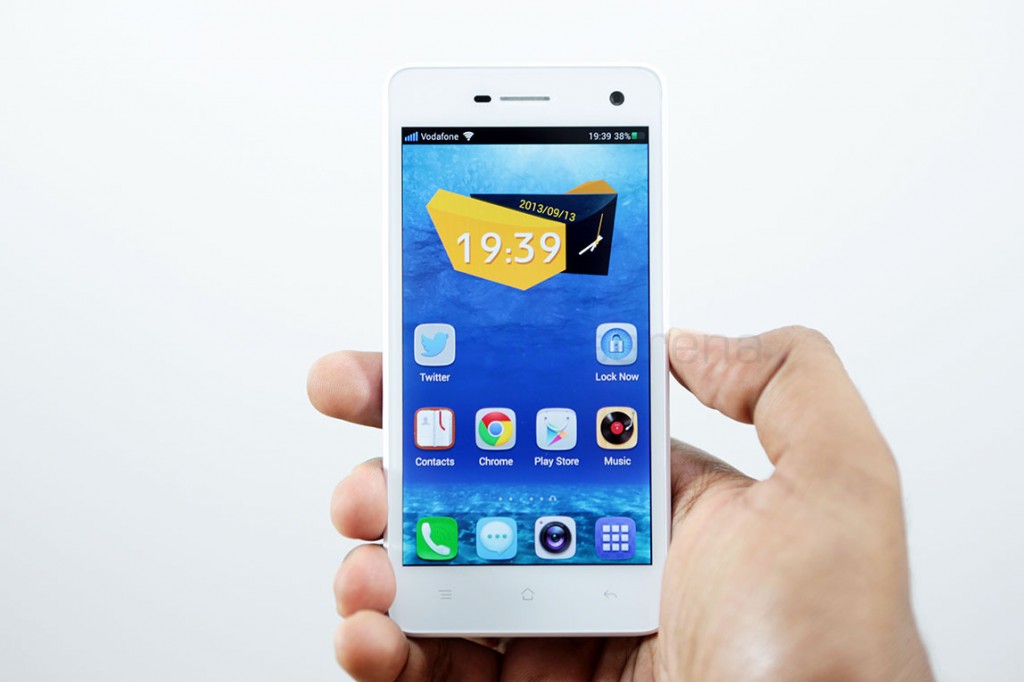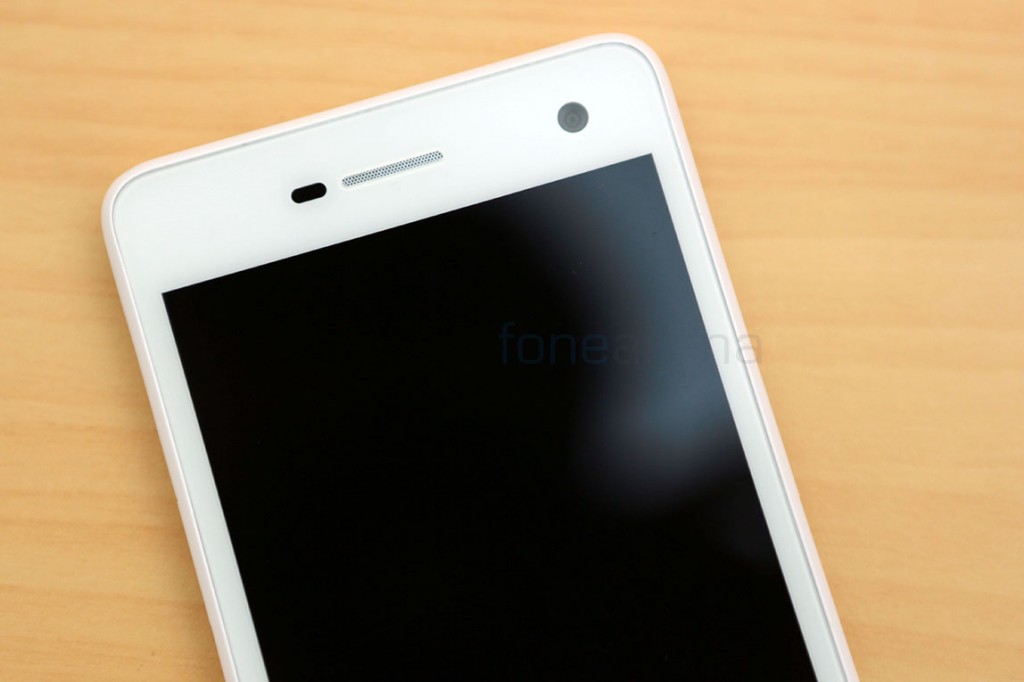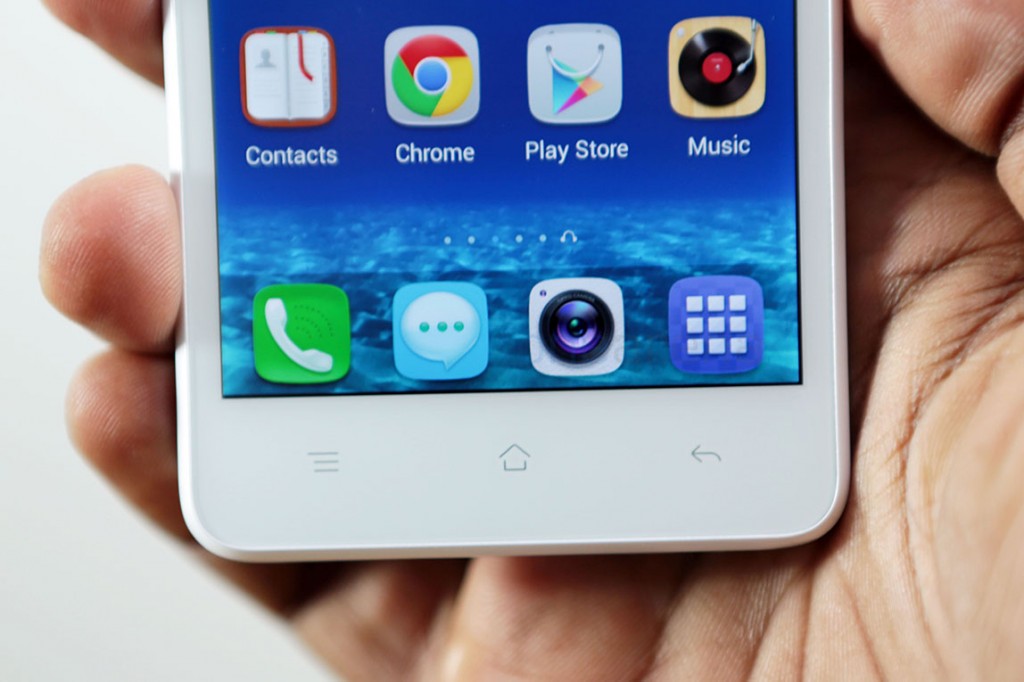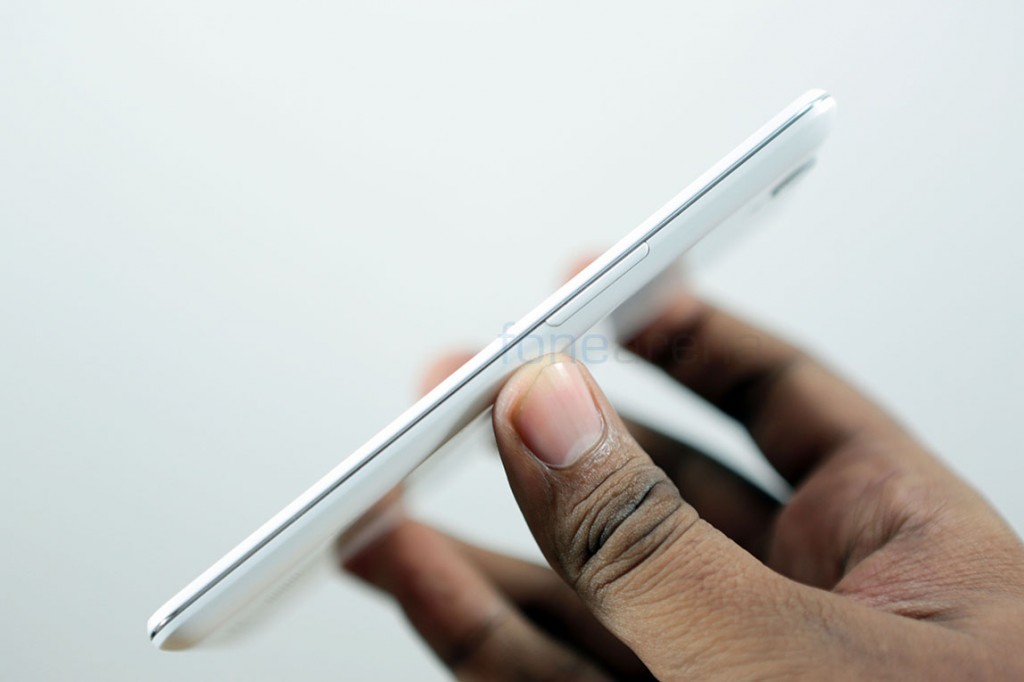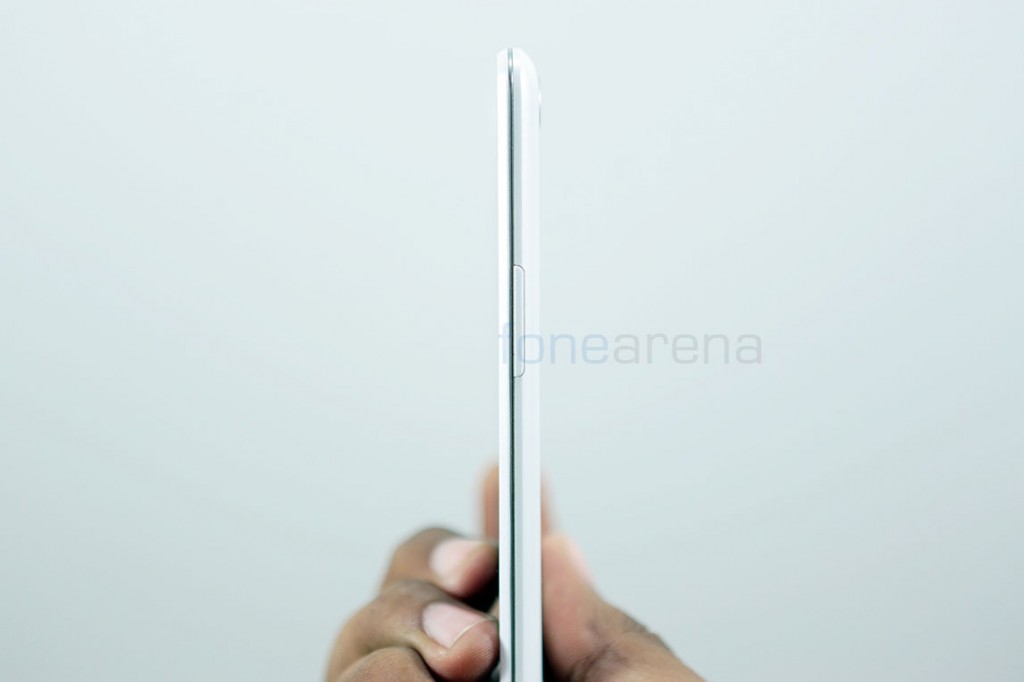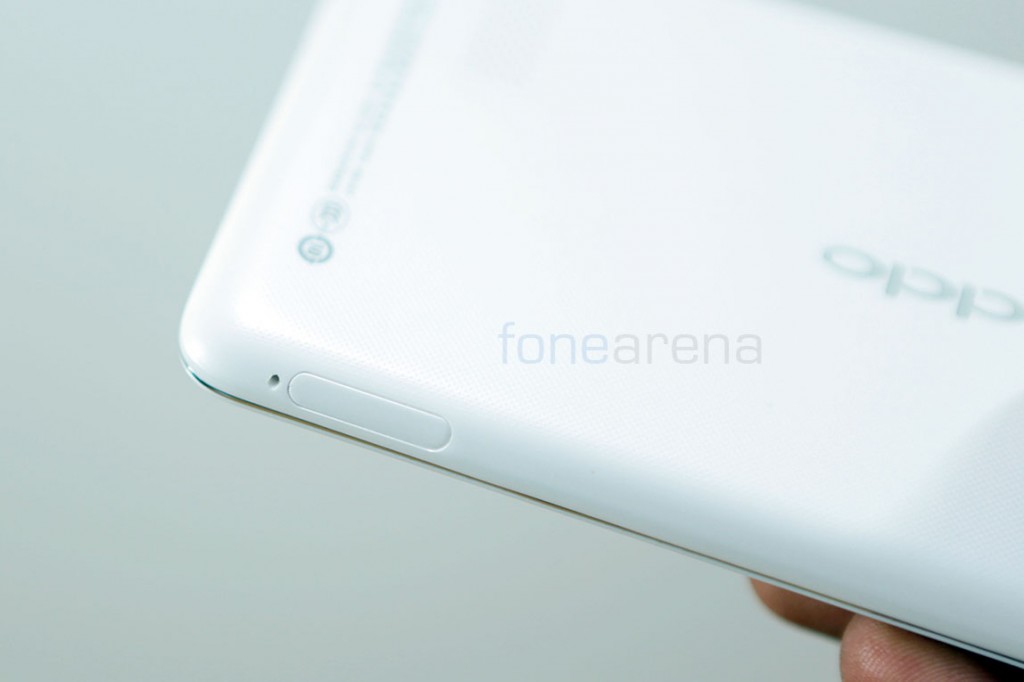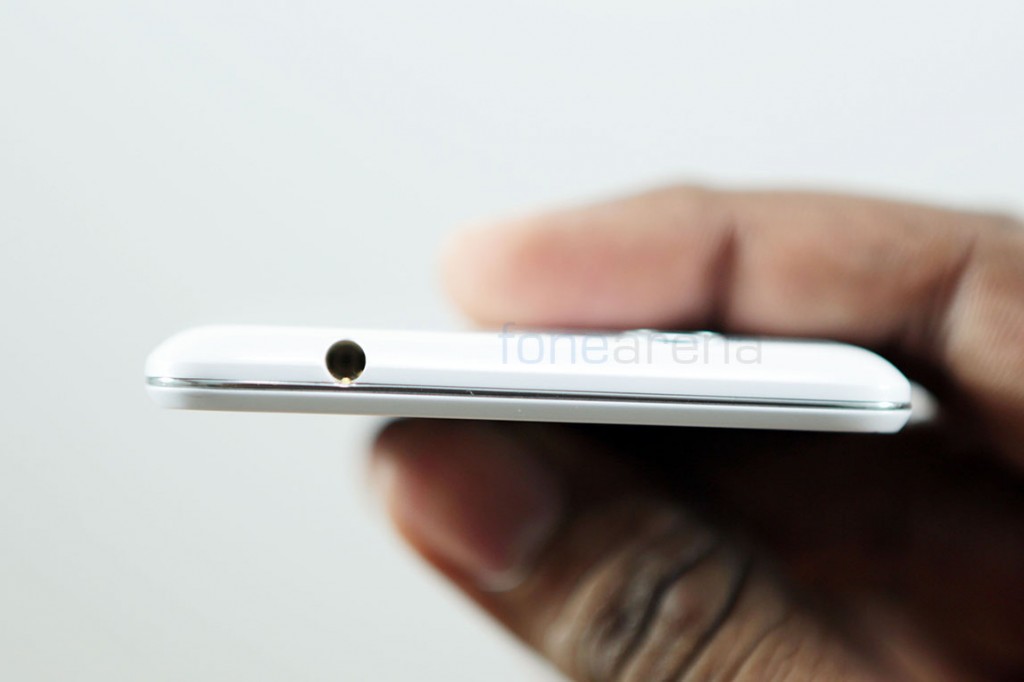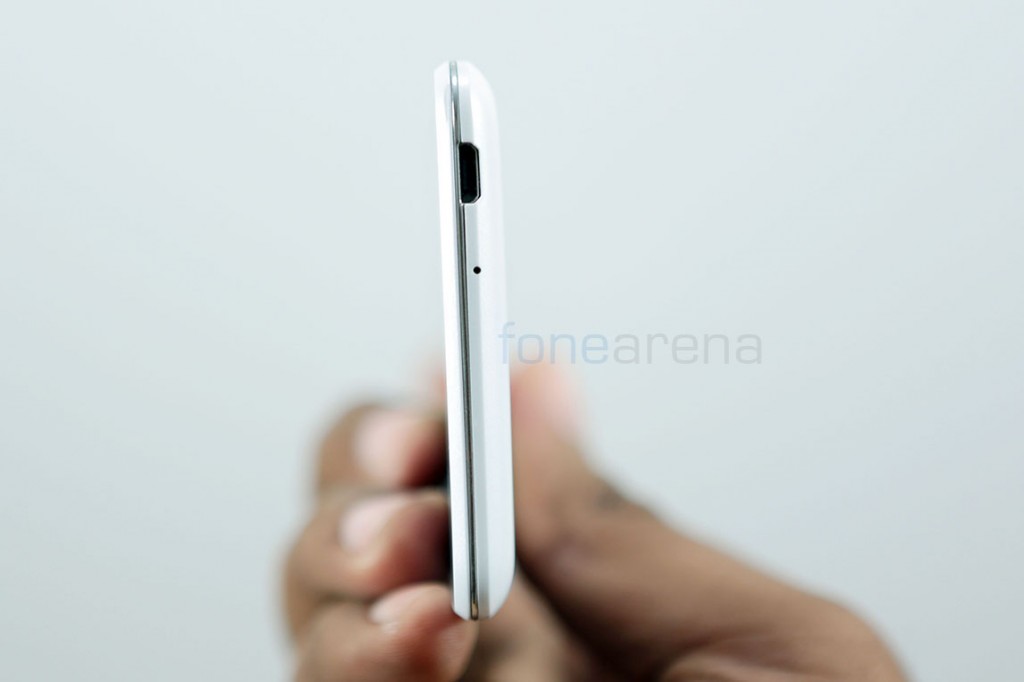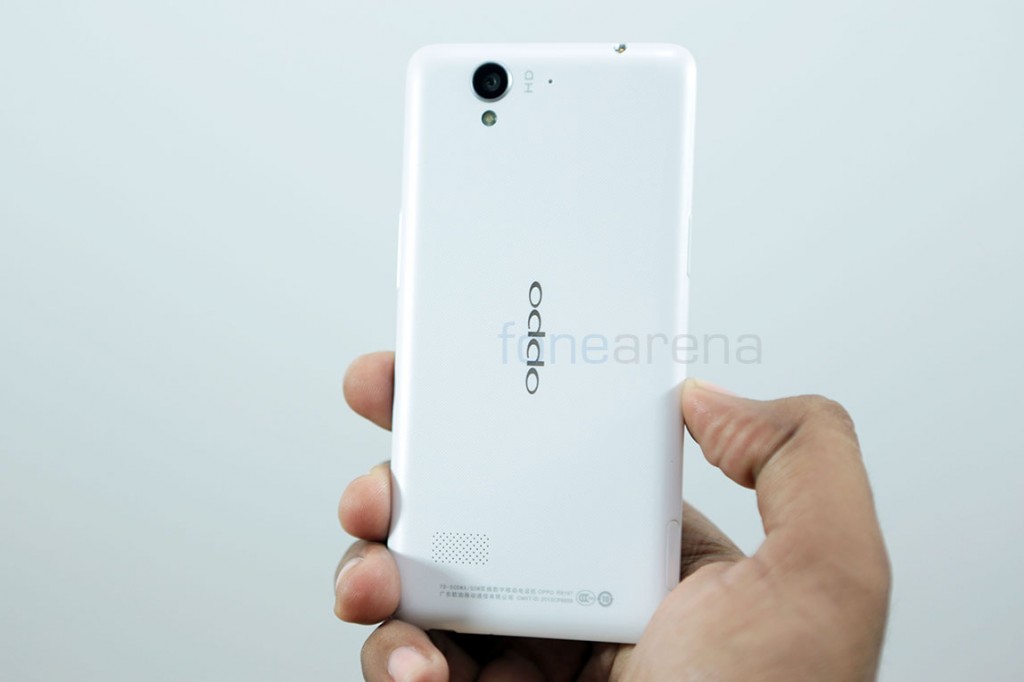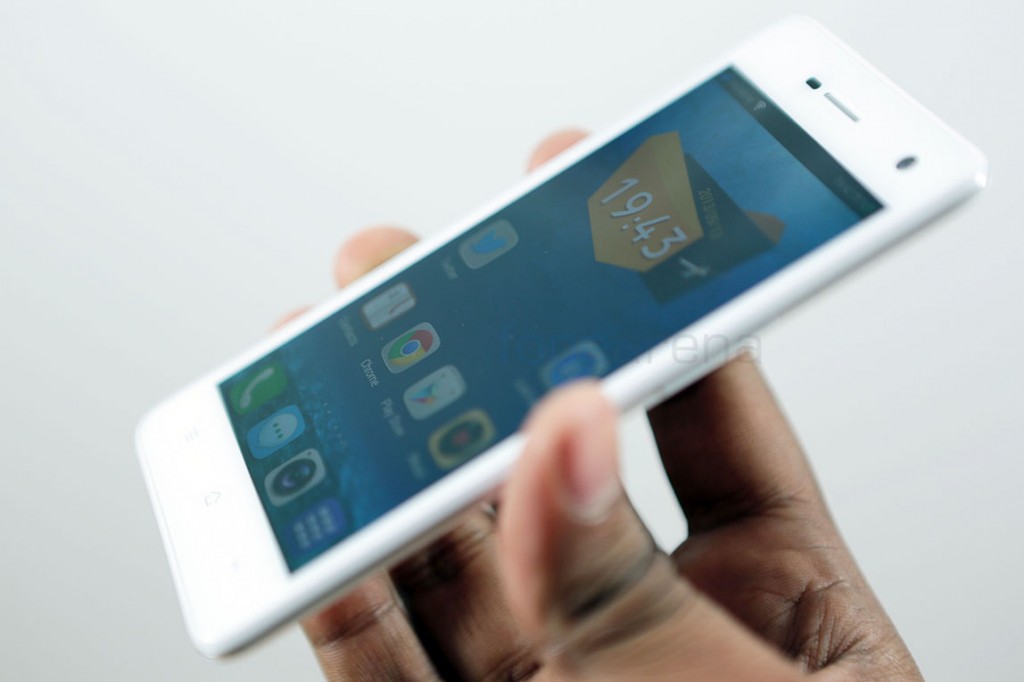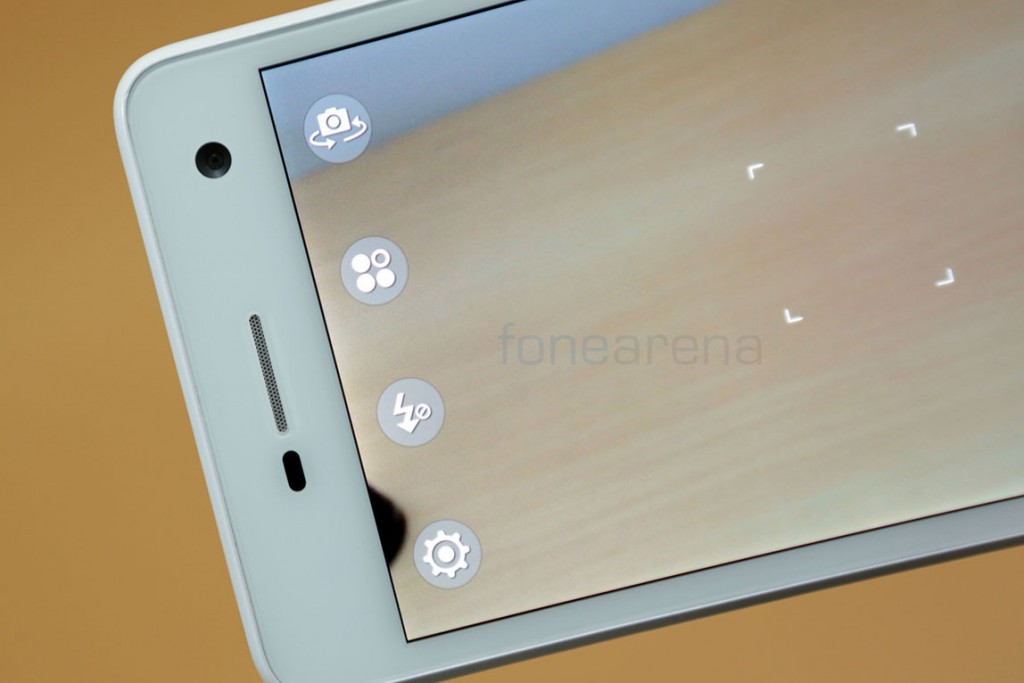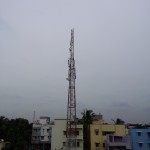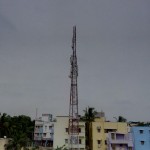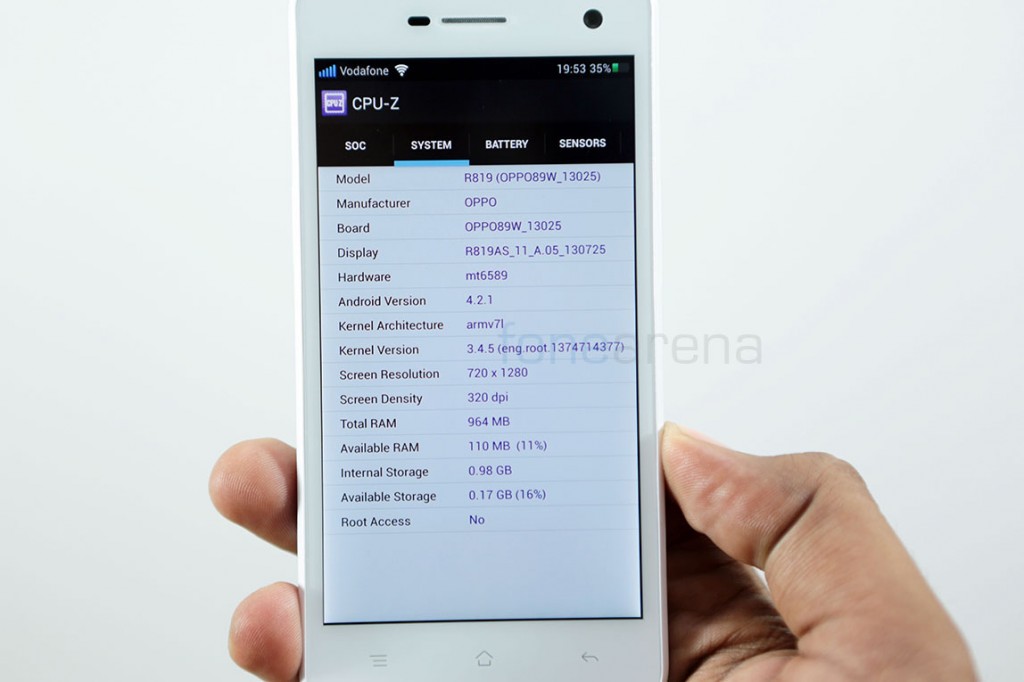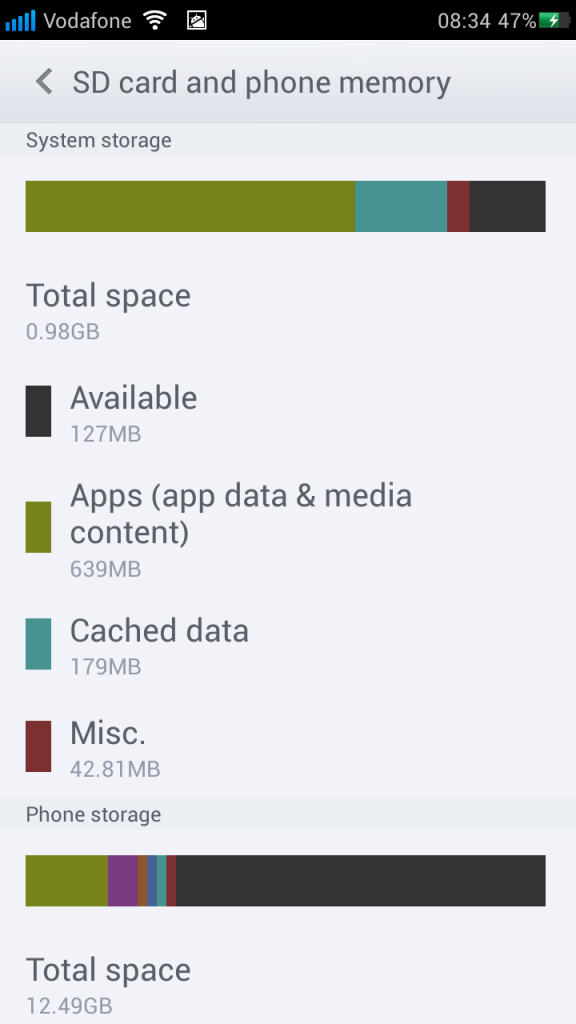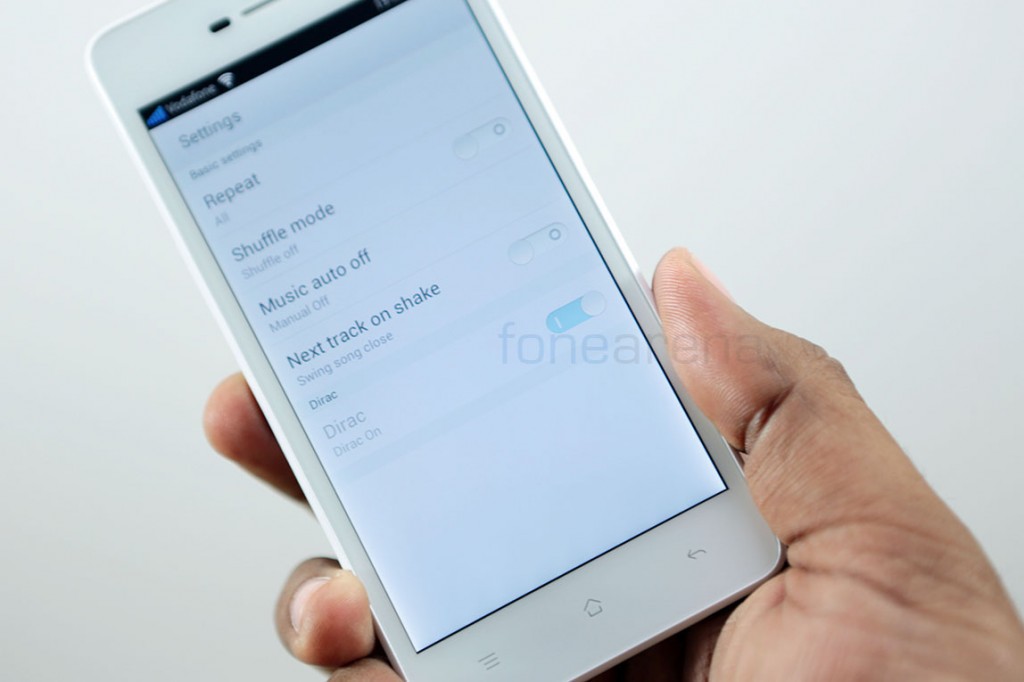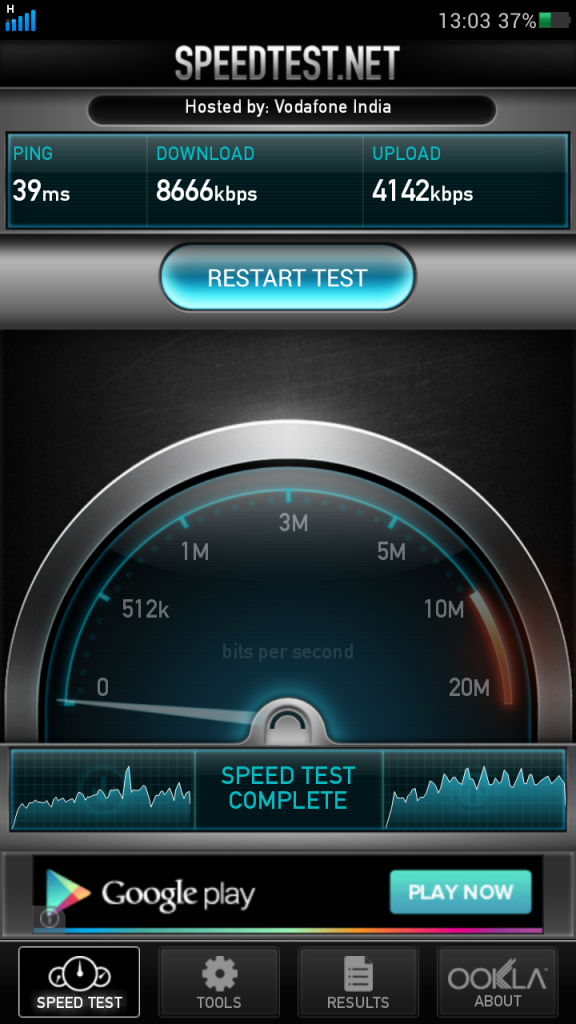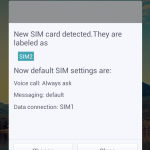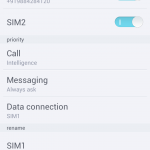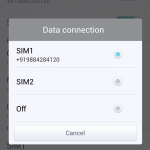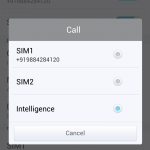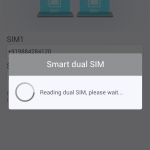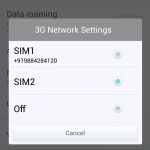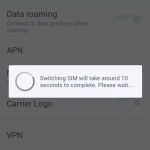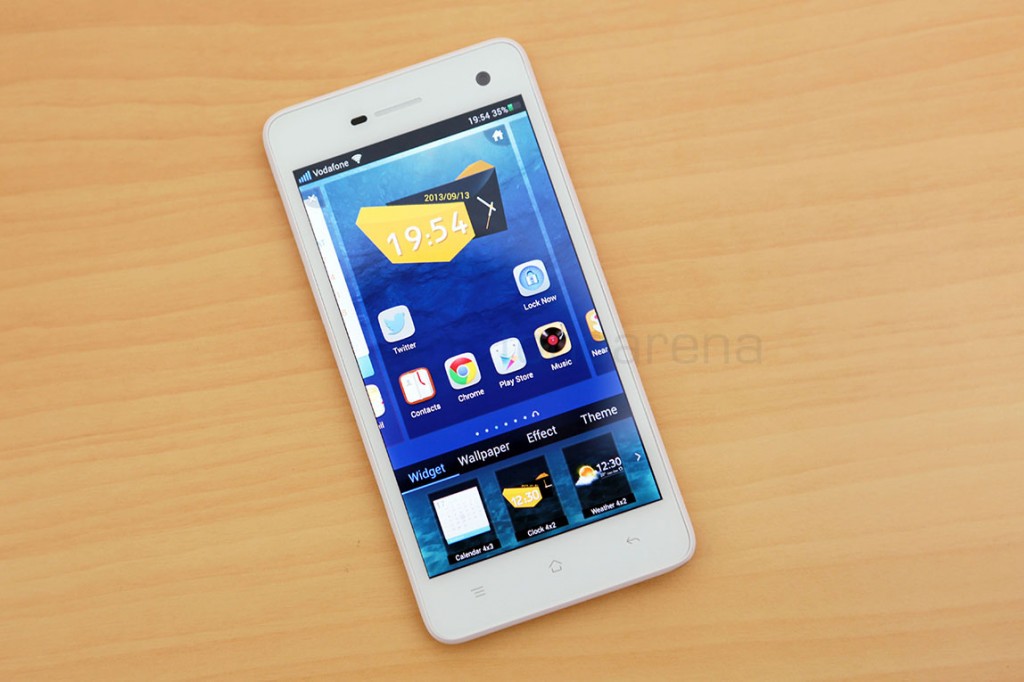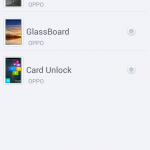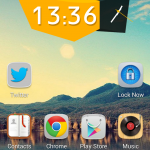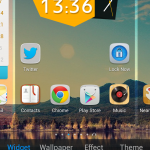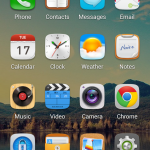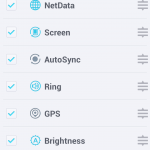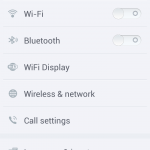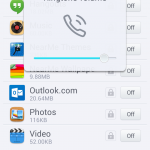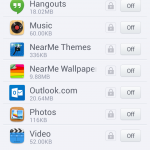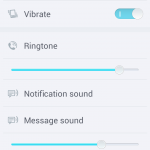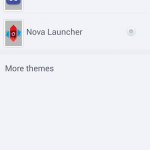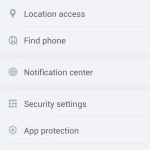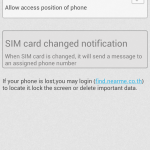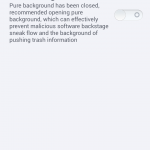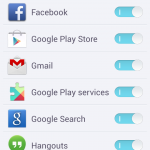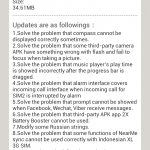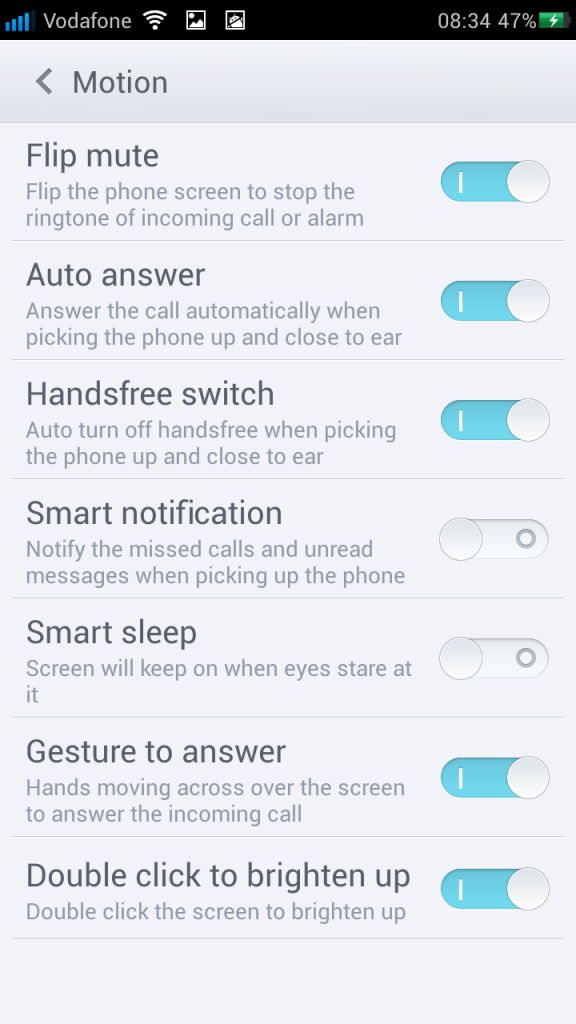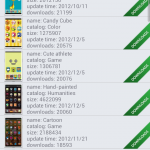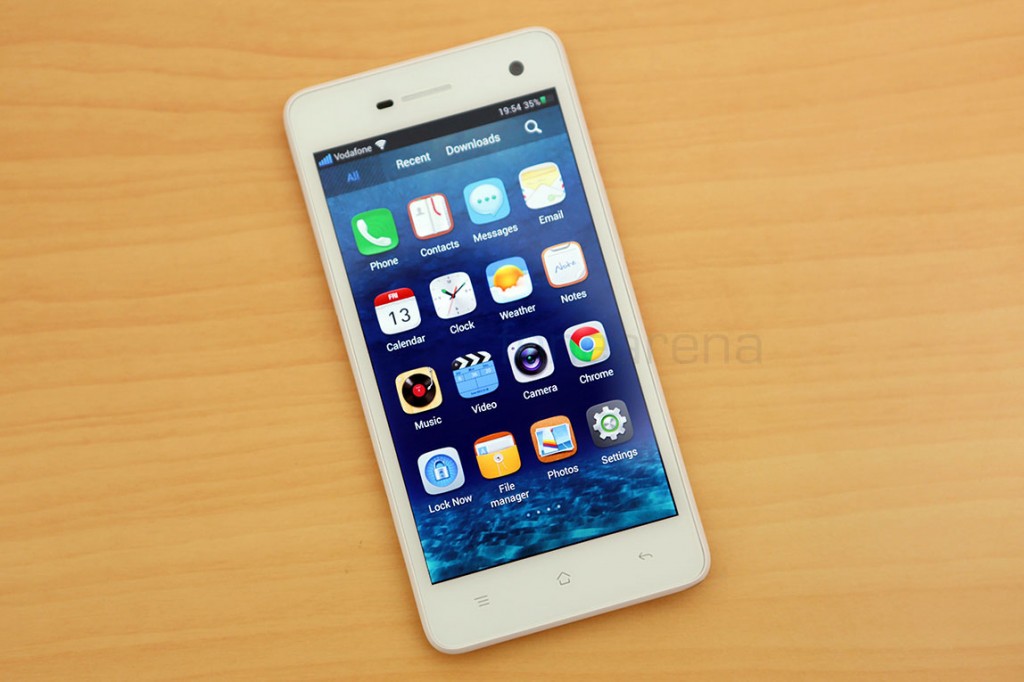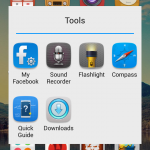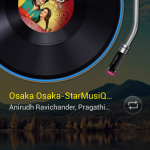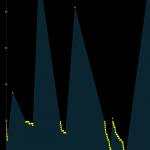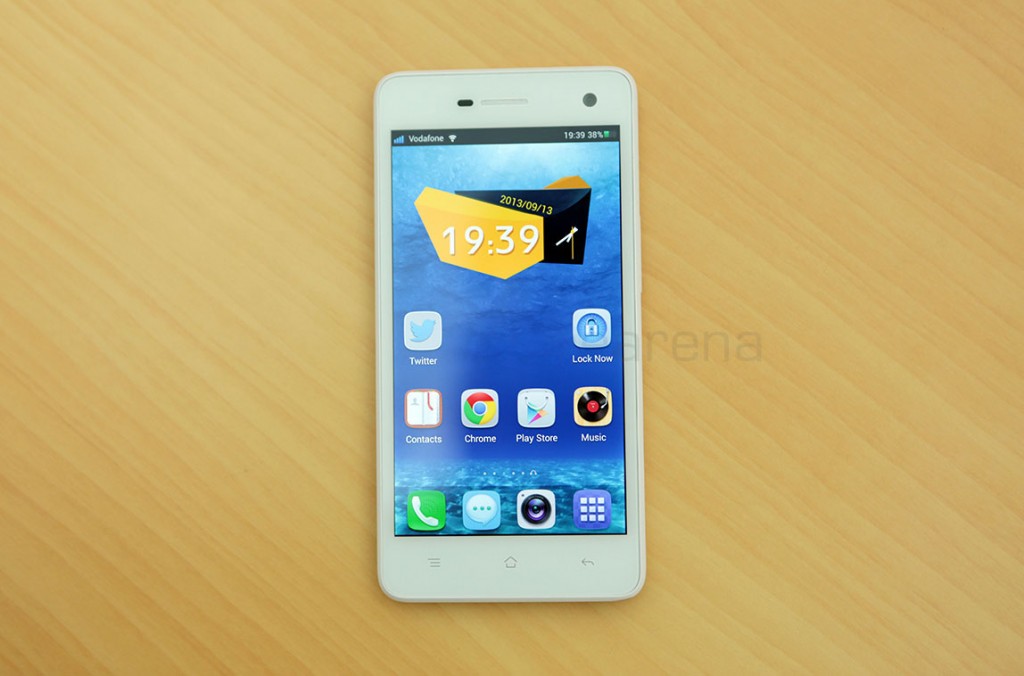Oppo, a relatively new player in the Smartphone world, had already impressed us with the beautifully made Find 5, its current flagship device. But as any company that looks to expand its portfolio, Oppo has sought to address the mid-range market, which brings volume as well as the ability to reach more people. The R819 is a step in that direction. Armed with a 4.7 inch 720p display, a super thin 7.3mm profile and an 8 megapixel camera, the device is a decent cut-down in specifications when compared to the Find 5, literally in every sense, including thickness and weight. Oppo is now getting into the very similar yet extremely crowded mid-range category, but does the R819 impress enough to stand out? Read on for our fully detailed review below.
Note: Check out the 360 degree view of the Oppo R819 before proceeding towards the full review!
Video Review
httpv://www.youtube.com/watch?v=TQBDzWsidTQ
Design, Build and Ergonomics
Unlike the Find 5 and its minimalistic design, the R819 takes it to a more conventional form factor. With rounded corners and tapered edges, it invokes a “Have I seen this somewhere?” reaction. The device is available only in white and since the bezels are also white, the display, the front facing camera and the sensors are completely dark and stand out from the rest of the parts. While Oppo has done well to streamline the design, it could have had black bezels to compliment the dark screen when turned off. The steel accents on the sides arguably improves the premium look of the device but the glossy back with a subtle pattern does factor against the same.
Coming to build quality, the phone is full made in glossy plastic with a sheet of glass covering its front. The sides have a thin line of metal running through, as mentioned earlier and the camera unit too has a protective brushed metal rim, these along with the earpiece grill make up for the metal parts on the phone. Since the back is glossy, it is a finger print magnet unlike the front, which is made of glass and still stays impressively grease-free. While overall build quality is expectedly top notch, with no signs of gaps or moving parts, we did find one tiny issue with the phone’s plastic build. Since the device lacks the required density, we could easily flex it and hear creaks while doing so. Don’t worry, this doesn’t really bend the device, but sometimes the creaks do bother us.
Coming in at just 7.3mm, the device is extremely thin and weighs just 110g. This massively improves the ergonomics of the phone, when coupled with the curved back. It’s a pleasure to hold the phone in the hands and feels great when you know that you can use it without worrying about it tipping forward or backward due to weight. In fact it is deceptively light and makes you forget you have a phone in your pockets. It’s thickness too plays a role in good handling, and we appreciate that there are no sharp edges on the device. Let us walk you through the hardware now.
Hardware Walkthrough
The front, fully covered in glass has a 4.7 inch 720p display, above which resides the 2 megapixel front facing camera and the usual pair of sensors – Ambient light and proximity.
Below the display are the three capacitive shortcut keys which offer haptic feedback when pressed but lack LED backlight, making it difficult to use in the dark at first, but thankfully due a standard arrangement, it’s not much of a problem.
On the right side of the device is the volume rocker, made of the same plastic as the sides and the back.
Over at the left side, you have a sufficiently long power/lock switch, and both the buttons don’t stick out that much, making it to hard to find at first.
On the same side resides the dual micro SIM slot which ejects when you use a pin-sized tool.
The top of the device houses the 3.5mm audio jack that connects to all your headsets.
Over at the bottom you have the primary microphone for voice calls and the micro USB port for charging and data transfer duties.
The back of the phone is adorned with the 8 megapixel camera and its single LED flash, with a secondary microphone for stereo audio recording in video.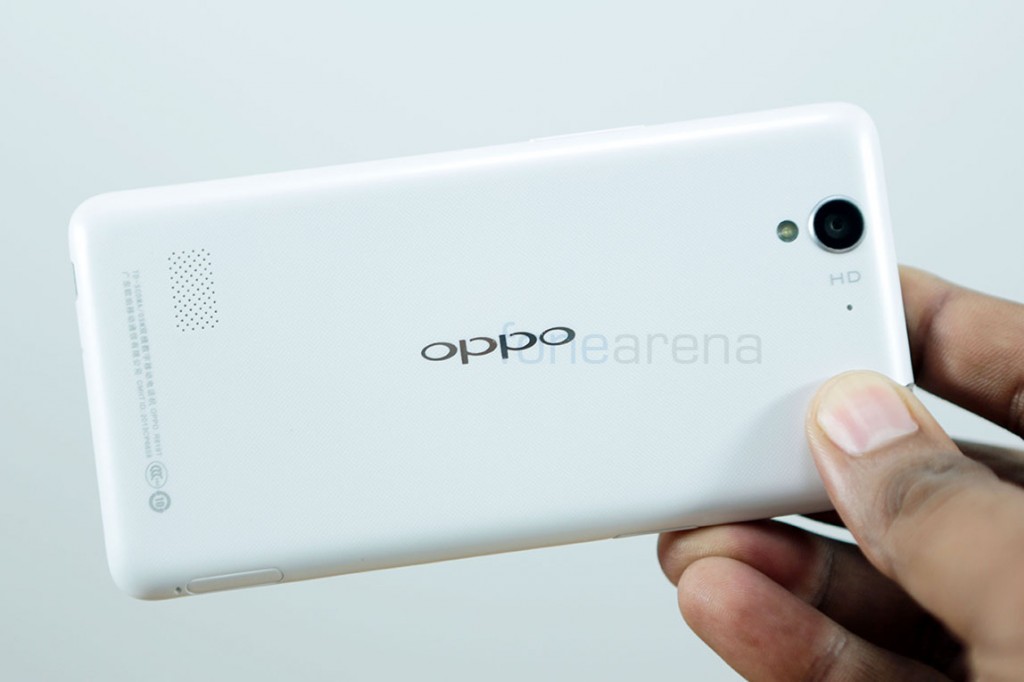
Beneath the camera is the Oppo branding and the loud speaker at the bottom left. That concludes the hardware walkthrough of the device, lets now take a deeper look into the marquee hardware.
Display
The Oppo R819 has a 4.7 inch IPS display with a resolution of 1280×720. Coming in at 312 PPI, the display is sufficiently dense by today’s standards. As we had expected though, the display had superb viewing angles.
Contrary to our initial understanding, the display doesn’t seem to be made with the OGS technology, but still impresses in viewing angles. Not only that the brightness, the colour and the contrast are also excellent.
But talking of the brightness, the one issue we found with the Oppo R819’s display was the weird bleeding of backlight on the edges of the screen. This was very evident in certain colours, like for example, gray or even a form of white. While this was not immediately apparent, it was a thing that could not be unseen. We think it might be an isolated issue on our unit, but if it’s prevalent elsewhere, it’s just not the ideal quality that we’ve grown to expect from the company.
We also noticed that the display has some kind of banding when you move your eyes across the screen. This is very similar to the phenomenon we witnessed with the Meizu MX2 too, presumably due to the refresh rate of the screen. Not a major issue though, just a thing we had noticed when compared to other displays.
Otherwise, the screen is generally good and garnered really positive reactions from whoever looked at it when I was using the phone. Watching videos was good, so was reading text on the web pages. Overall, a really good display.
Camera
The R819 comes with a 8 megapixel sensor made by Sony. This sensor, called the Exmor R is one of the first back-illuminated sensors from Sony and coupled with a f2.0 lens, it is purpose-built for taking useful low light pictures. There is a 5-element lens(plastic) with Blue-glass filters for better rendition and colour balance, according to the company.
Oppo also has implemented its own dedicated ISP for extra sharp and colourful images, basically doing the post processing algorithms their own way, with their own custom hardware. Talking of custom, Oppo also has done its own user interface for its camera, unlike others who just use the MediaTek camera app.
While it skimps on features, the interface is actually very minimal and has quick go-to actions for most used features. A better overview of the interface can be seen here, on video –
httpv://www.youtube.com/watch?v=tEJDkK4CdsY
As you noticed above, the interface is nothing like what you found on the Find 5, but delivers on the basic functionality including some additional features like Rewind, which is just a 6-shot burst mode that lets you selectively save one from the lot. The device can also do continuous burst on a shutter long press, just FYI. The camera also has the modes like Panorama, HDR and Face Beautification along with the point-and-shoot-esque modes like Sunset, Auto scene and Night. But then, it all comes down to camera performance.
Here are all the image samples that you saw in the video(and more), in full resolution(click to open in full screen)
Daylight
Macro
HDR
Low Light
Thoughts on Camera Performance –
- Day light performance is great, vivid colours and super detailed
- HDR mode actually works and tone mapping creates positively interesting results
- Low light is too noisy in Auto mode, night mode makes it slightly more bearable but still noisy
- Thanks to f2.0 macro shots have plenty of bokeh
Overall camera performance is great except for in extreme low light. make sure you use the night mode under low light conditions as the auto mode just is too noisy for the low lights pictures to be usable. Also, it’s good to note that the daylight performance is excellent, same goes for the HDR mode, which might be slow in taking the photo, but the quality is perfect. It might not be Find 5 levels, but still very impressed with the camera.
The device can record videos in 1080p at 30 fps with stereo audio. You can see the video embedded in the camera review above. Overall, we are really impressed by the Oppo R819’s camera. Considering the price it comes at, the camera performs really well in well-lit situations and average in low-light conditions and the video performance is not bad either. A pretty good camera on this phone!
The 2MP front facing camera is also quite good, with it being capable of full HD video. It has a nice 85 degrees wide angle lens that lets you fit more people in the frame.
Internals and Performance
The Oppo R819 is powered by a MediaTek 1.2 GHz Quad Core chipset codenamed the MT6589. This is extremely common in most mid-range Android phones that are contract-manufactured in China, and we were surprised to see even Oppo using it. The chipset is really popular with mid range manufacturers and is powered by a PowerVR SGX544 MP2 GPU. Along with 1GB of RAM, the specifications make it look like a standard-issue MediaTek device, but how does it perform?
We tested out the performance of the R819 with some benchmarks and this is what we got –
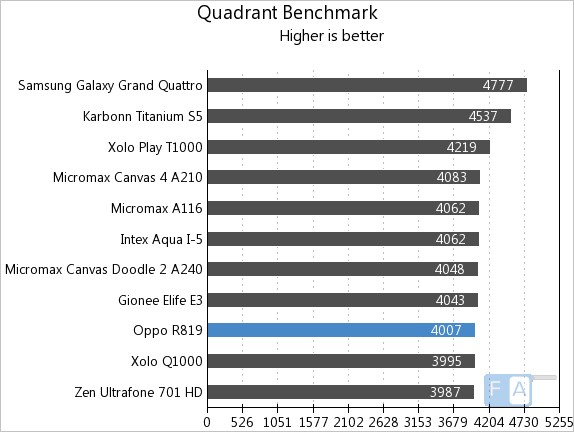
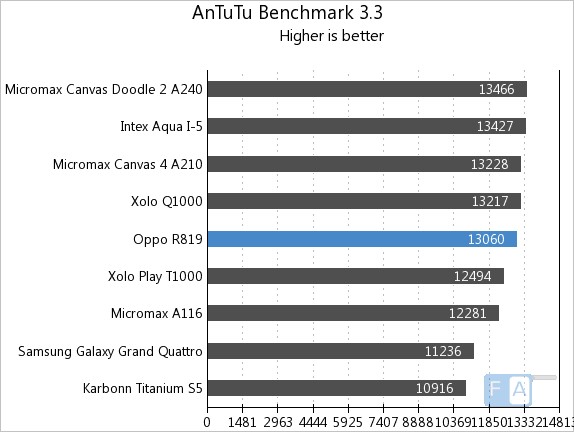
You can check out all the other benchmark tests we did, here. We also naturally tried out some games to see how the R819 fared in the most important performance factor of all, here is how it went –
httpv://www.youtube.com/watch?v=K6-pt2EBcZ4
As you can see from the benchmarks and the gaming overview above, the R819 is just average in terms of performance. You might have noted in the benchmarks that, in most of the tests, the R819 was as good as the MediaTek devices, while in the others, not so much. We also noticed very similar performance in gaming. It’s certainly not the best, but we wouldn’t discount it as bad either.
In terms of real world performance, we couldn’t find the stutters and lags the benchmarks and gaming would have made you believe. The stock launcher did refresh itself when in-and-out of memory intensive apps, but we didn’t find that to happen with third party launchers. Even the browser performance was optimal, so we guess that in real life, the user wouldn’t notice the performance deficit much unless while in graphically intense games.
The RAM performance was predictable too, with about 50% of it almost always free in idle, but the internal storage is a different story altogether. The good part is it having 16 GB of storage out of the box, but the bad part is not having a micro SD slot. Out of 16 GB, you get 13 GB as the user storage. While it is enough for most, people wanting to use a lot of music and videos on the phone will be disappointed.
Music and Loudspeaker
The Oppo R819 comes with this amazing technology called Dirac. Before I overstate its awesomeness, you can look at what we had written for the Find 5 review –
Basically, Dirac HD is tailored proprietary audio processing. It is not just software, but software tailored for specific hardware and that’s where it shines. By mapping out the acoustics of the corresponding hardware, Dirac provides a special chip tailored to the loudspeaker or the earphones, thereby maximizing the optimal output. The Dirac HD sound makes music sound as original as possible with little amplification and a streamlined clear sound output. From the Dirac website –
What are the benefits of Dirac HD Sound?
In short, the main benefit of Dirac HD Sound is that it improves the loudspeaker characteristics, yielding a better sound in terms of:
– Improved staging (localization of sound events)
– Better clarity and intelligibility in music and voices
– A deeper and tighter bass
– Reduced listening fatigue
We can attest to all the above advantages, they are definitely real. This tailored optimization technique has been taken advantage of by Oppo, by employing the chip inside the phone, which in turn is tailored for the in-box headset. Yes, the white headset inside the box is optimized for Dirac HD, and let me tell you this, this gave the best quality music I have heard in my whole lifetime. I am no audiophile, but Dirac HD would immensely please them for sure.
Similarly, the R819 has the non-HD version of the same technology, and it is every bit awesome as the Oppo Find 5. It’s easily very different from what you usually listen to, on other smartphones. One of the best, and if music is you primary use, the R819 will serve extremely well. A small mention to the loudspeaker as well, it might not be as great as the one of the Find 5, but it is really good and loud, but it might not be enough for listening to music even in mildly noisy conditions, but when you have Dirac in headphones, why would you even bother.
Connectivity and other hardware
The R819 is stocked with connectivity options. Being a Dual SIM phone, the phone manages to use a one-of-a-kind tray to accommodate two micro SIMs. Out of the two SIMs, one can be used for 3G connectivity, while the other supports only upto EDGE data rates. The call quality was very good and we faced no problems in dropped calls or in 3G data speeds. The Dual SIM functionality is enabled only when you insert two SIM cards, otherwise the settings menu doesn’t show “Smart Dual SIM” or “SIM management”. The Smart Dual SIM method is extremely similar to what Samsung offers, by call forwarding from one SIM to another, which is supported only on few networks.
The SIM management options are granular and lets you select a default or lets you select when necessary using the options for calls, messaging and data. Since only one SIM can work with 3G at a point in time, one needs to select the default 3G SIM in the wireless and networks options. To explain the functionality easier, here is a photo tour of the dual SIM functionality on the Oppo R819 –
Other connectivity options include Bluetooth 3.0, WiFi Direct, GPS, FM Radio with RDS and DLNA. The R819 also supports screen mirroring over WiFi Direct(Miracast) and we tested it out with the Netgear PTV3000. Suffice to say, it works really well. Due to the thinness of the device, there is the obvious lack of other fringe options like NFC, but it was not missed except when connecting to some audio accessories.
Software
As with any Chinese OEM these days, the R819 too runs on a recent version of Android – 4.2.1 Jellybean but with a custom skin on top. Oppos own custom skin, like we noted in our Find 5 Review, is beautiful and functional except for the oversized icons and ugly widgets. It almost remains the same with the R819, but with a few new additions and interface tweaks.
The lockscreen is still the same, with several options available for the user to change to. We have the Glassdoor and the Weather lockscreen(our pick) intact, and the new addition seems to be a card-styled lockscreen. The weather lock screen offers quick access to the camera and displays a nice animation when the device is in charging, it is aesthetically pleasing.
The notifications drawer has a lot of shortcut toggles, but there is no separate window for all the toggles in one place, like other 4.2 devices. There are also no lockscreen widgets, so the advantages of 4.2 are quite non-existent in this skin. That makes the Oppo R819’s Ui implementation less functional than others but it has enough differentiation factors to consider.
The homescreen is very similar to what we had on the Find 5, with some new additions. First, you have a separate Theme slider in the contextual menu option on the homescreen, and then there are new animations for switching between the homescreen and the app list. The iOS like hold and delete option for uninstallation is gone and you can finally drag icons into the homescreen like every other launcher. Most interesting of the additions is the separate page for music, which has a turntable like setup for pausing/playing music. This is new, but not contextual like how Samsung’s “Page buddy” works.
The settings page too, is similar to what the Find 5 offered. There are four pages with categorized functions and utlities for specific functions. While it does have all the necessary elements, there was also the extra gesture based options, which is one of the differentiation factors.
It has all the motion-based gestures you usually see on Samsung devices, like the Flip-to-mute incoming calls, Answering calls directly by placing the phone to the ear, moving the hand across the screen to answer the calls, smart sleep, which is a different name for Samsung’s Smart Stay and finally, the best feature of all – Double tap to wake the screen. This was first implemented in the much loved Nokia N9 and it is great to see that most other manufacturers have implemented it in their devices. LG has its own implementation of this called Knock-on, and we are sure others will be bringing it too.
Other differentiation factors include major theming and customization. NearMe – this is the brand that Oppo wants to use, to introduce all kinds of customization features to the end user. There are two apps devoted to this, called NearMe themes, where you can download tons and tons of themes, and NearMe Wallpapers, where you get tailored wallpapers for the R819 and presumably the Find 5 too. You also have customization options inside the display tab in settings, where you can even set the default launcher that is in line your tastes. The NearMe Sync cloud service needs to be activated in order to use this free service.
Other interesting features include granular control over notifications, booting and security of each and every app. This provides insane levels of control over what happens on your phone, or not, if you choose to. There is also the in-built Find my Phone option that you can use to locate your device when lost. This uses the NearMe service too, with a URL to find the device from the browser.
Apps
As with all the Android devices, you have all the Google apps pre-installed, but since this is a Chinese phone, it deserves a mention. Apart from the Google apps, you have the heavily customized default apps. The file manager is rich with file-type detection and generally robust features. There is an app for the FM Radio which comes with RDS but doesn’t have recording capabilities.
The music player, as discussed, comes with Dirac audio and has a slightly different user interface than the Find 5. We found it to be quite functional and minimal in terms of details and controls. The video player too is similar, with quite robust options like Subtitles, brightness controls and even pop-out options. The default keyboard is the annoying Go Keyboard with three custom skins, we immediately replaced it with the Google keyboard much like what we did with the launcher.
There are also other utility apps included like Notes, Weather, Sound recorder and flashlight and even a camera effects application called Lomo camera with Photobooth like effects. Overall, we think we liked all these apps on the Find5 more. But all these apps don’t matter if you go with the options of different ROMs on the phone.
Yes, the major feature of the R819 or any oppo’s software is that, thanks to the unlocked bootloader, you are free to load up whichever ROM you feel like. Well, not all, but the ones that support the device that is. Oppo’s own site has the links to tell you (they are not live for the R819 yet) which ROMs are supported and how you can install them, which is super useful. You can either install Oppo’s own Color ROM, or the stock AOSP ROM, or even CM10 and Paranoid Android, which are highly popular third party ROMs. In the end, it’s your choice, and all that we have said above is applicable only to the pre-installed firmware that comes with the R819.
Battery Life
Coming to the battery life, the Oppo R819 has a 2000mAH non-removable Lithium Ion battery. In our regular day to day testing, we found that the battery lasts up to 20 hours on average use, which includes Whatsapp, Twitter and browsing, over WiFi and 3G intermittently. When it is just 3G, the battery drains faster, and the screen-on time too, is a huge factor in assessing the battery life. The Battery app that comes with the device is barebones and displays nothing but the percentage. We understand that since the battery apps is departed from the custom UX, Oppo has not chosen to implement, so we used a third party app to track how the battery performed.
Overall, we think the battery life is average and it really met our expectations having used a lot of MediaTek based devices. It’s not too bad considering that you get almost 20 hours on moderate usage and almost 10 hours on heavy usage.
Conclusion
So, were we impressed with the device? Almost, we’d say. The R819 has a great display, a superb camera and overall, a thin and light build that is light on the pockets and great in the hands. It also has some interesting software features and options to change and switch the ROMs to your wish. But the performance is just average when it comes to games and other intensive tasks, with the build quality being slightly doubtful, at least on our review unit. The R819 is marketed as a “Convenience without compromise” device. While we are very sure about the convenience part, we are slightly doubtful about the compromise part, because lets face it, there are quite a number of compromises made here and it’s up to you to decide whether you can live with it, or not.
At $349 and prices close to this point, there are some excellent Chinese devices like the Meizu MX3 and the Xiaomi Mi3, which might make you think twice about the R819, but if you can live with the above said disadvantages, then the R819 might actually suit you best. If you’re still not convinced, here is a quick list of Pros and Cons that might help you judge the device better –
Pros
• Awesome display
• Great Camera Performance
• Excellent for music
• Thin and Light build
• Nifty options for Software + Customization
Cons
• Average performance for the price
• Build Quality issues on our unit – Bleeding backlight and flex creaks
• Default launcher is slightly overdone
• Average Battery Life
• No micro SD slot

